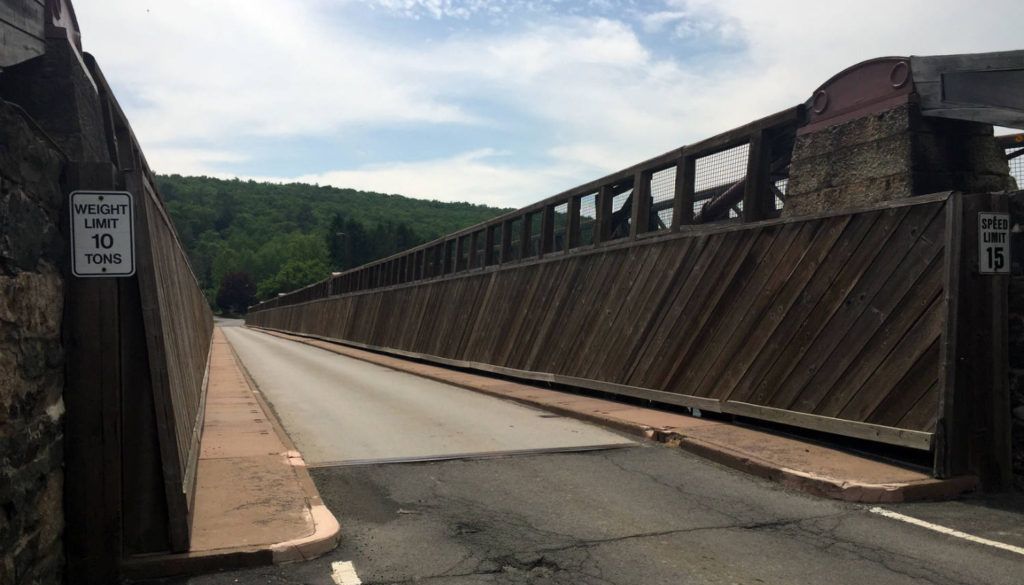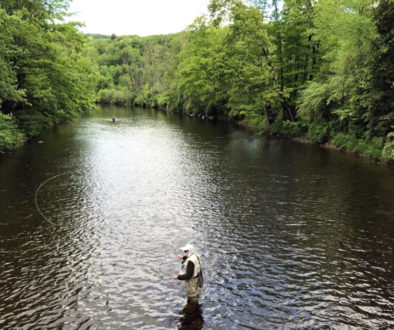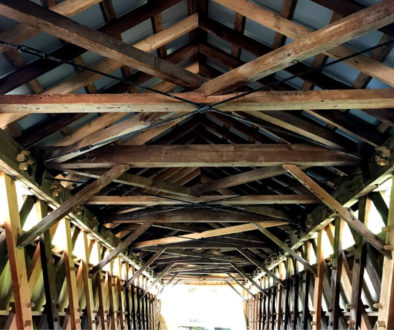Roebling’s Bridge: Oldest Existing Wire Suspension Bridge in the U.S.
by Chris Clemens

It might seem that passing over the Delaware River from New York into Pennsylvania on the country’s oldest existing wire suspension bridge would be a precarious adventure. But now that I’ve done it, I can vouch for the 535 feet of sturdy passage and safely recommend an experience that any regional explorer should want to have. Originally named “Roebling’s Delaware Aqueduct”, the passage accommodates both automobile and foot traffic to get from Minisink, New York (Orange County) over to Lackawaxen, Pennsylvania.
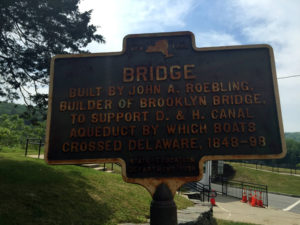
John A. Roebling is the genius behind the aqueduct and, if that name sounds familiar, it’s because you really know your bridge history. Just twenty years after manufacturing the aqueduct that is now called “Roebling’s Bridge”, he would go on to span the East River and link two New York City boroughs while building the country’s first steel wire suspension overpass: The Brooklyn Bridge.
Prior to the existence of Roebling’s Aqueduct, a point on the Delaware River had been dammed to allow boat passage from state to state so the coal fields in northeastern Pennsylvania could move product to the Hudson River. While it was fine for a while, the method proved largely ineffective overall. Once the Erie Canal to the north was completed and then railroads began to provide industries a greater shipping footprint, it was decided that to stay competitive, they would need a better way to ford the river.
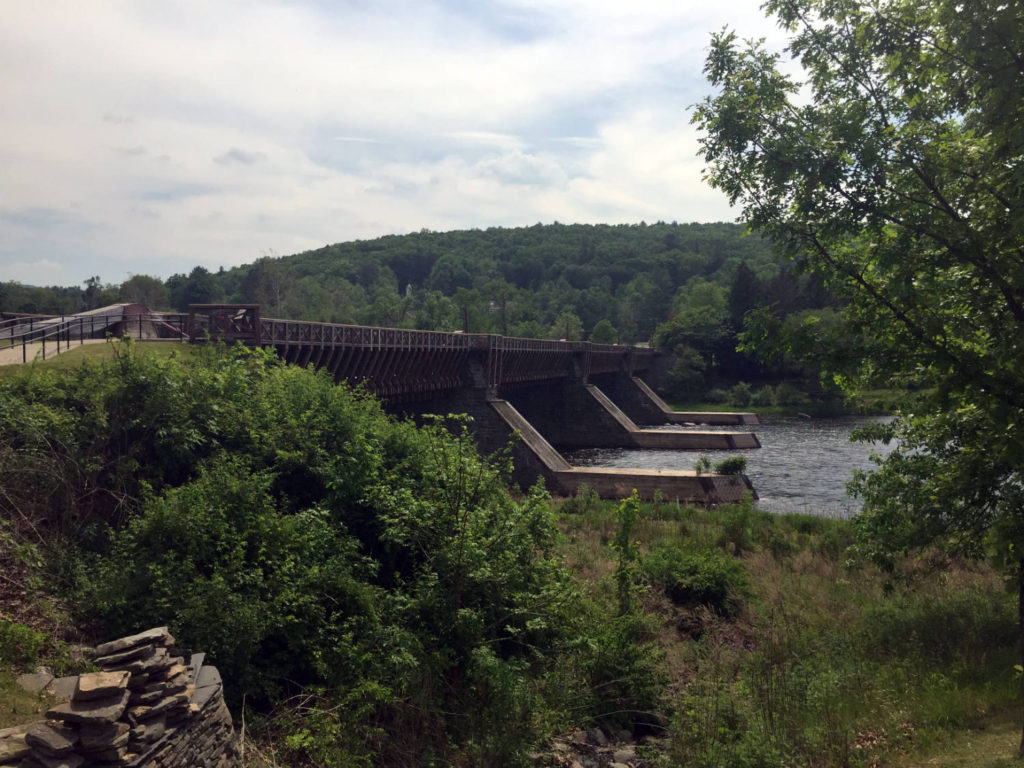
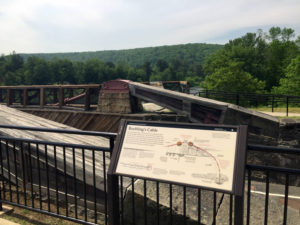
As a German immigrant who had studied under a number of well known professors from various disciplines, John Roebling settled in Pennsylvania with his brother Carl after leaving Prussia in May of 1831. After discovering a distaste for farming and a failed attempt to create a German settlement, he returned to his previous academics and sought a career in engineering. He built a number of bridges throughout the region, which included four over the Delaware River.
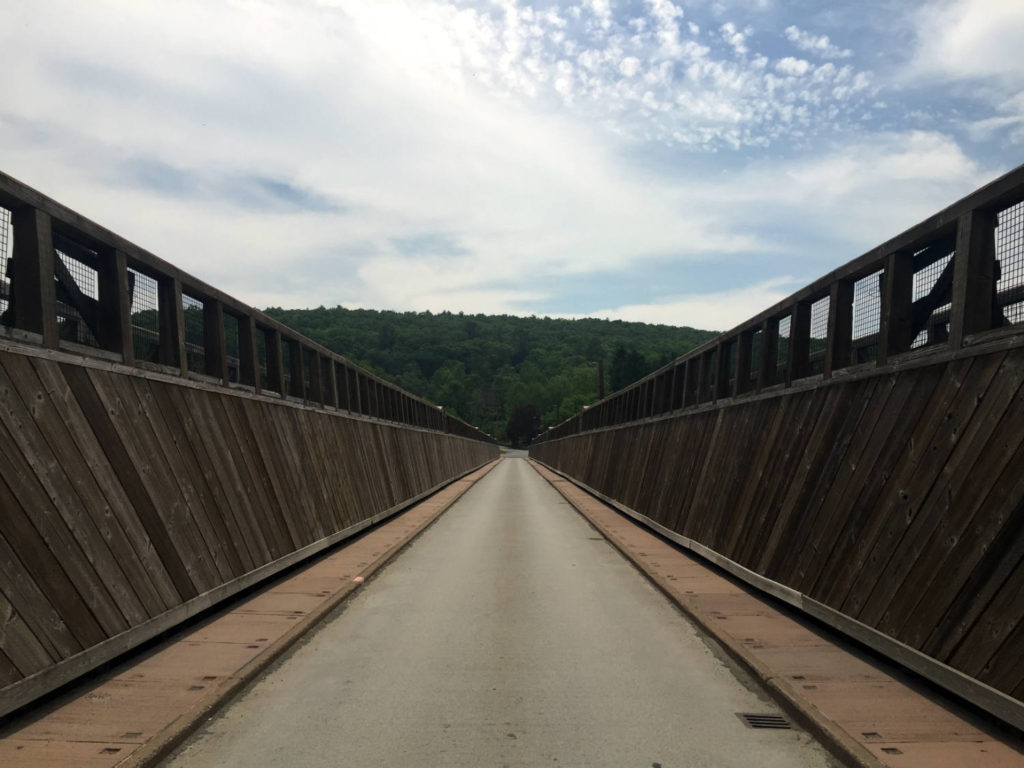
At a cost of $41,750, the aqueduct allowed canal traffic to travel perpendicular and over the Delaware River. The engineering feat was built in 1847 and effectively allowed boats to pass east to west and north to south without causing a traffic jam.
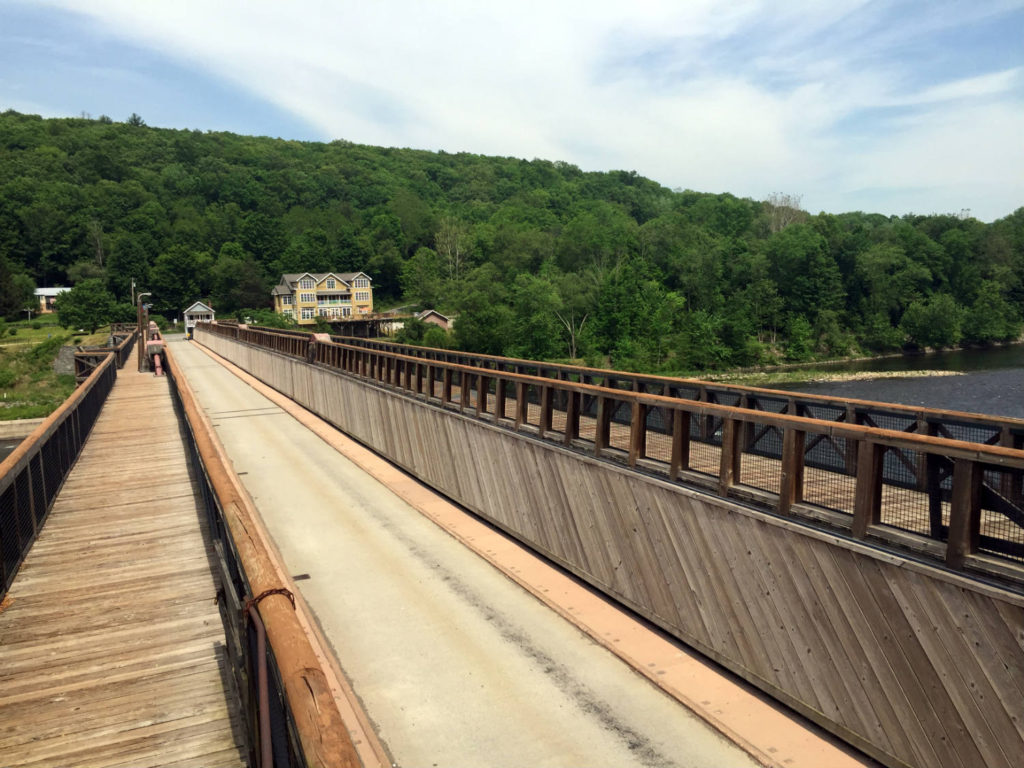
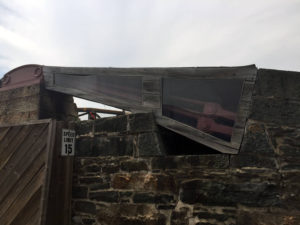
When the canal closed in 1898, it remained while others on the river were removed. The remaining bridge was converted to accommodate vehicles and a toll house was added to collect from passersby up until as late as 1979. Recognizing the importance of the bridge’s history, it was designated as a National Historic Landmark in 1968 as well as a National Civil Engineering Landmark.
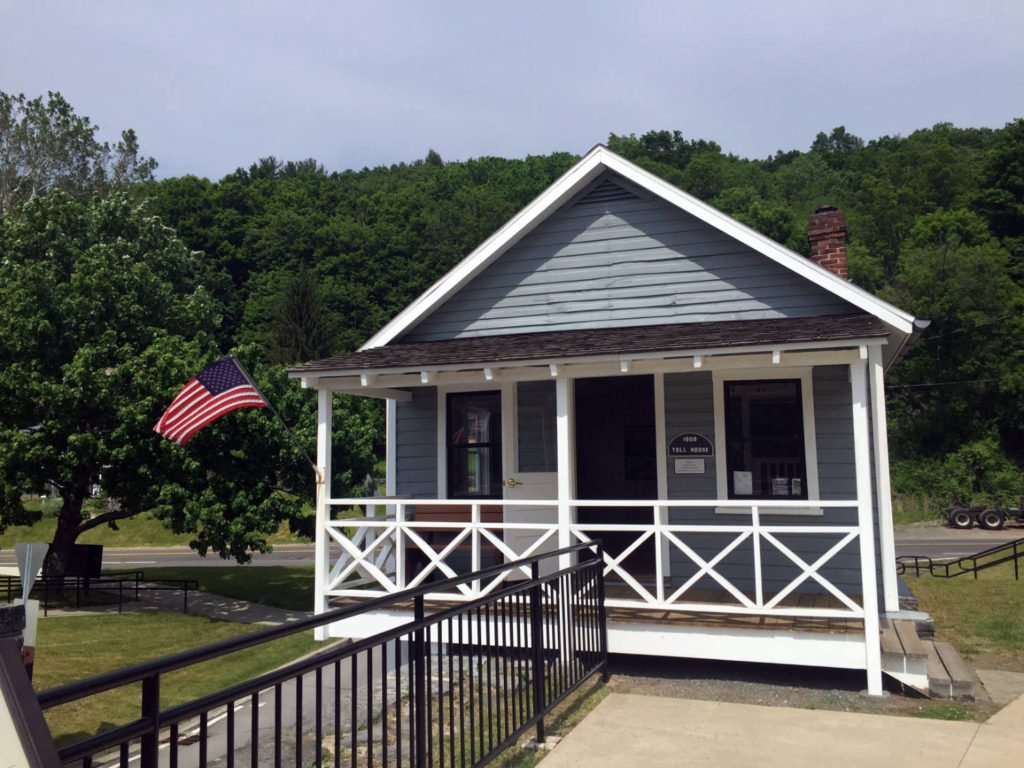
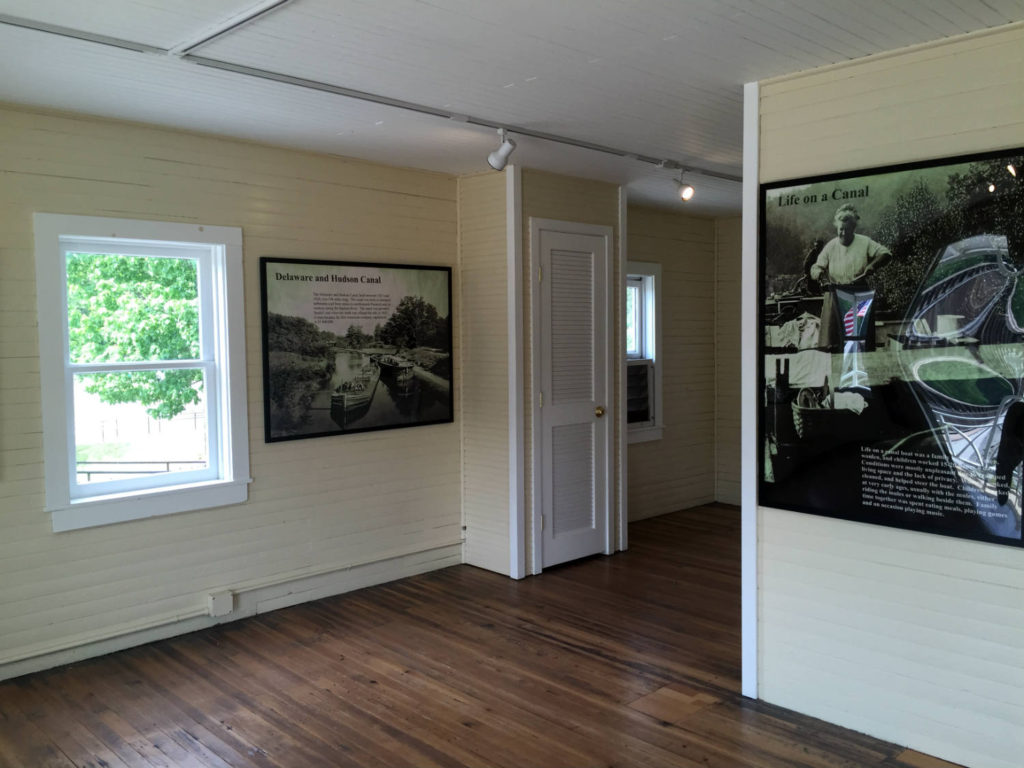
In 1980, it was purchased by the National Park Service and restored to its original aqueduct appearance, which is why it feels like you’re driving in a half tunnel. At one point, it would’ve been filled with water!
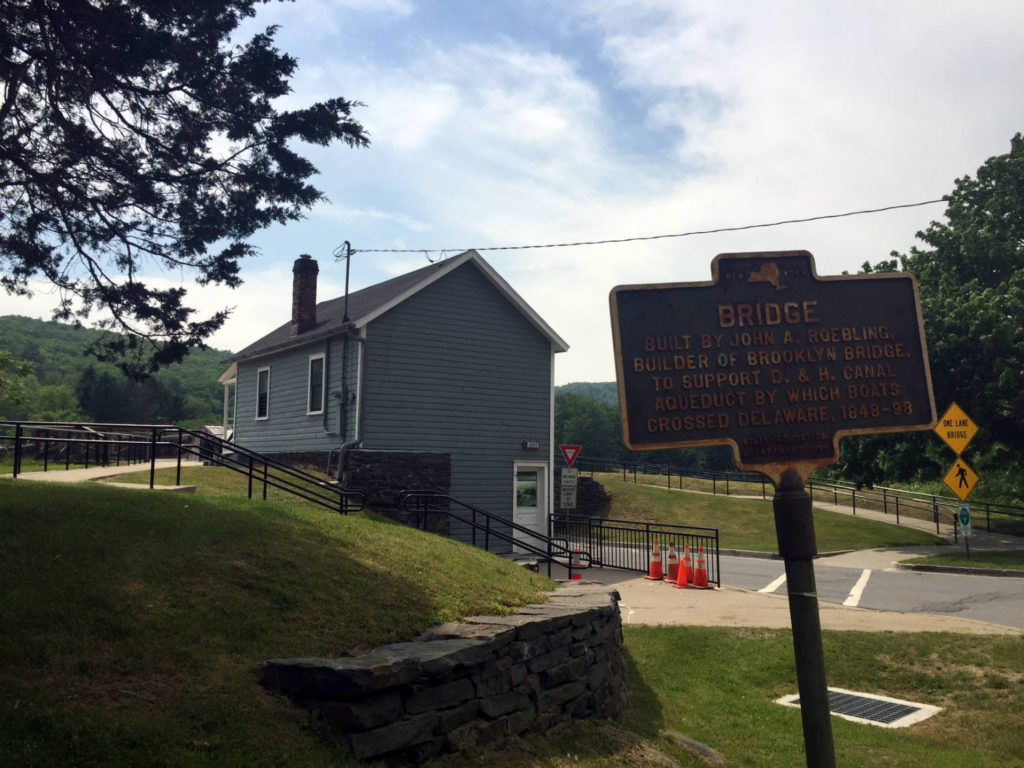
Checkout this 360-degree, interactive panoramic video of me driving over the bridge! Don’t like the angle of the video? You can use your cursor/thumb to move it around, or if you’re on an iOS device, just hit ‘play’ and start moving the device around!!
Better yet, you should go drive it yourself!
Resources and Additional Reading
Roebling’s Delaware Aqueduct on Delaware Scenic Byway website
Pennsylvania’s Engineering Marvels – Roebling’s Aqueduct on GribbleNation
Roebling and the Brooklyn Bridge on Library of Congress website
“John Roebling Was About So Much More Than The Suspension Bridge”

Chris Clemens is the Founder/Publisher of Exploring Upstate. From his hometown in Rochester, he spends as much time as possible connecting with the history, culture, and places that make Upstate New York a land of discovery. Follow him on Twitter at @cpclemens

